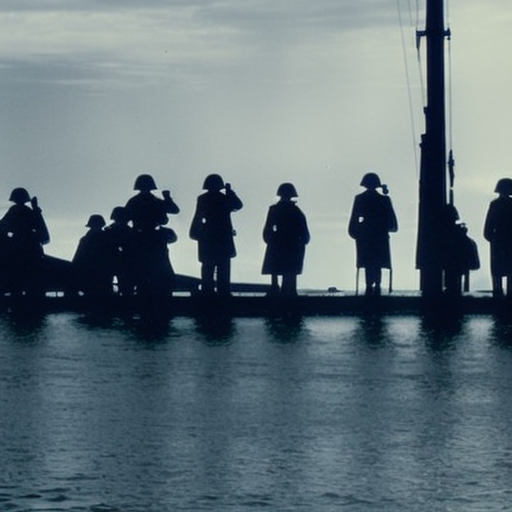Summary:
The U-boat campaign was a significant naval strategy employed by Germany during World War I and World War II. It involved the use of submarines, known as U-boats, to attack and sink enemy ships, primarily targeting merchant vessels. The campaign had a profound impact on both wars, disrupting supply lines, causing significant loss of life, and challenging the naval dominance of the Allied powers.
World War I:
During World War I, Germany implemented an aggressive U-boat campaign against the Allied powers, particularly targeting British shipping. The German Navy employed unrestricted submarine warfare, which involved attacking any ship, including neutral vessels, without warning. This strategy aimed to cut off Britain’s supply lines and force it to surrender. The sinking of the British passenger liner RMS Lusitania in 1915, resulting in the deaths of 1,198 civilians, including 128 Americans, drew international condemnation. The United States eventually entered the war in 1917, partly due to Germany’s U-boat attacks. However, the introduction of convoy systems and improved anti-submarine tactics by the Allies helped mitigate the threat posed by U-boats.
Interwar Period:
Following World War I, Germany faced severe restrictions on its naval capabilities under the Treaty of Versailles. The U-boat fleet was significantly reduced, and Germany was prohibited from developing new submarines. However, Germany secretly continued submarine development and training in violation of the treaty. The interwar period saw advancements in submarine technology, including the introduction of larger and more advanced U-boats.
World War II:
At the outbreak of World War II, Germany once again employed U-boats as a crucial part of its naval strategy. The primary objective was to disrupt the flow of supplies to Britain and isolate it from its colonies. The U-boat campaign initially achieved considerable success, with German submarines sinking numerous Allied ships in the Atlantic. The Battle of the Atlantic, as it came to be known, was a protracted struggle between German U-boats and Allied naval forces. The Allies responded by implementing convoy systems, using sonar technology, and developing new anti-submarine tactics.
Turning Point:
The turning point in the U-boat campaign during World War II came with the introduction of new technologies and tactics by the Allies. The development of radar and improved sonar systems allowed Allied forces to detect and track U-boats more effectively. Additionally, the breaking of the German Enigma code by British codebreakers at Bletchley Park provided crucial intelligence on U-boat movements. The use of long-range aircraft and escort carriers also played a significant role in countering the U-boat threat.
Impact:
The U-boat campaign had a profound impact on both World Wars. In World War I, it led to the loss of thousands of lives and contributed to the entry of the United States into the conflict. In World War II, the U-boat campaign posed a significant threat to Allied shipping and was responsible for sinking thousands of merchant vessels. However, the Allies’ successful countermeasures, combined with the increasing vulnerability of U-boats to air and surface attacks, ultimately turned the tide in favor of the Allies. The U-boat campaign highlighted the importance of naval warfare and the role of submarines in modern conflicts. It also demonstrated the significance of technological advancements and effective intelligence in countering submarine threats.












